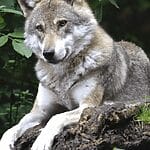Marsupial moles are small marsupials that are native to Australia and most commonly found in Western Australia.
Despite their name, marsupial moles are not actually moles at all, rather they are much more closely related to other native marsupial species in Australia.

This animal gets the mole part of its name because it spends the majority of its life underground, much like a mole. It also features the same sleek body and minimal eyesight. Marsupial moles are fascinating creatures.
In this article, we will look at the facts, diet, habitat, and other interesting information about these beautiful creatures with pictures.
Overview
Marsupial moles are very small creatures that weigh only 30 – 70 g and stretch to only 10 – 20.5 cm when they are fully grown.
They spend the majority of their time burrowing underground which earned them the name that they have despite the fact that they are not moles.
Marsupial moles have an assumed average lifespan of just 1.5 years. This statistic isn’t accurate due to a lack of data on these animals.
Gathering data about marsupial moles is a difficult task due to the remote location which they inhabit and the small population. There are only an estimated 10,000 to 100,000 marsupial moles in Australia.
As a result of this small population, marsupial moles are considered to be an endangered species.
Distribution
Geography
There are two main types of marsupial moles. The southern marsupial mole and the northern marsupial mole.
Both species live in desert areas with the northern marsupial mole being distributed in north-central Australia, and the southern marsupial mole is distributed in the Northern Territory, Western Australia, and South Australia.
Biome
There are two main types of biome in which marsupial moles are likely to be found. As we mentioned above, these animals inhabit desert areas throughout Australia.
Therefore, it is not surprising that their preferred biome is sand dunes or flat areas of sandy soil. They can commonly be found along river banks that have soft sand that can be burrowed through easily.
Climate Zones
When it comes to climate zones, marsupial moles are actually very versatile. They are capable of surviving in arid or dry climates that are likely to be common in desert environments during the warmer months.
They are also perfectly comfortable existing in a more temperate climate that has a more moderate temperature, seasonal rainfall, and clear seasons throughout the year.
To round off the adaptability of these incredible animals, they are capable of existing in more tropical climates that have higher average temperatures and an increased amount of rainfall.
This adaptability is likely a significant factor in the species’ resilience and ability to survive despite their small numbers.
Habitat And Lifestyle

Writing about the habitat and lifestyle of the marsupial mole is a difficult task as there is currently very little data and knowledge about this species that is available.
However, we are able to make assumptions about the habitat and lifestyle of these animals based on the existing knowledge that we have of similar animals.
This is particularly true for marsupial moles as we can call on the knowledge that we have of both marsupial animals and other mole species.
Experts agree that marsupial moles are likely to be solitary rather than traveling and living in large groups. This is believed to be the case because they do not have large, permanent burrows to come back to and facilitate an entire group.
This is also a reasonable assumption based on other burrowing animals that do live in large, social groups such as meerkats.
Evidence suggests that it is a similar story when marsupial moles venture above ground. There is very little to suggest that these animals socialize with each other when they are out of their burrows. This is, of course, not counting when these animals mate.
Most information that we have about these animals comes from Aboriginal sources. These sources say that marsupial moles most commonly surface above ground during colder weather and just after rainfall.
Although, it is worth noting that they will come to the surface at any time.
When marsupial moles move around above ground, they are clumsy and sluggish. They tend to shuffle rather than take clear steps.
This is likely because they have very poor eyesight and are having to feel their way around above ground like they would underground. Unfortunately, this leaves them exposed to local predators.
Because marsupial moles don’t create complex, permanent structures underground, they are constantly making temporary burrows to create somewhere that is safe and dry.
As the marsupial moles dig their tunnels, the soft sand that they are digging through gives way and closes the opening behind them.
This hides the animal from predators and the elements and keeps them safe. It is also a useful way to disguise the entrance to their tunnels from predators as all that is left behind is a small, oval shape of loose sand.
During the hours that marsupial moles are active, they spend the majority of their time in their burrows and will usually reside at a depth of 20 – 100 cm beneath the surface.
Diet And Nutrition
Marsupial moles are mostly carnivores, or to be more specific, they are insectivores.
The diets of the Northern marsupial mole and the Southern marsupial mole do differ slightly due to the differences in the types of food that are available to them in their habitats.
Southern marsupial moles generally have a diet that consists of insects that they find. They supplement this diet with termites, ant eggs, ants, tiny reptiles, and seeds.
This diet is varied and provides enough nutrients to help the marsupial mole survive.
Northern marsupial moles have a diet that typically consists of beetles, centipedes, eggs, seeds, salamanders, and lizards.
This is because these food sources are much more readily available in the habitat of the Northern marsupial mole. Again, this diet ensures that the marsupial moles get all the nutrients that they need to survive.
Mating Habits
As with the social habits of marsupial moles, very little is actually known about the mating habits of these animals. Northern marsupial moles are thought to mate in November when the weather is warmer.
The mating season of the Southern marsupial mole is entirely unknown although there is a chance that it is similar to its Northern counterparts.
The aboriginal sources that have helped to build our knowledge of marsupial mole socialization and lifestyle behavior actually provide very little insight into mating habits.
Aboriginal sources say that they actually know nothing of the marsupial moles’ mating habits, seasons, and rituals. They even claim that they have never seen any marsupial mole offspring.
Because we have almost no knowledge of marsupial moles’ mating habits, we also have no understanding of their gestation period.
Similarly, we do not know how or when marsupial moles wean their offspring, or when young marsupial moles reach maturity.
It has been estimated that female marsupial moles will birth 1 – 2 young at a time who are born undeveloped. After the birth, the offspring move into the pouch of the mother.
When they are in the pouch they will feed on the female’s milk and continue to develop until they reach weaning age which is currently unknown.
Population
Population Number
The estimated population of marsupial moles is estimated to be between 10,000 and 100,000 overall. The estimated population of mature marsupial moles is between 10,000 and 50,000.
Although these numbers seem to be low, marsupial moles are actually classified as a species of least concern on the list of threatened species. This classification has been earned because the population of marsupial moles is very stable.
Threats To Population
The threats to the population of marsupial moles are another area in which we have very little knowledge.
However, there are some well-informed estimates that have been made by experts using knowledge of traditions and threats to other, similar species.
Marsupial moles used to be hunted by Aboriginal people, but this happens an insignificant amount now. Instead, the main threats that are faced by marsupial moles are predation by feral cats and foxes.
These predators are known to hunt and catch marsupial moles that are above ground and ones that are below the surface.
Another potential threat to marsupial moles is the changing climate that they live in. changes to the weather patterns and average temperatures can affect their food supply and the conditions of the ground.
Wildfires becoming more frequent and more severe can also have a significant impact on the population of marsupial moles.
Similarly, a loss of habitat can be a huge threat to the population of this animal as natural and manmade changes disrupt the areas in which they inhabit.
Final Thoughts
Marsupial moles are a mysterious and incredibly interesting species that have managed to remain hidden from the scientific community for decades.
Very little is known about them, although scientists and biologists have been able to make educated guesses based on their similarities to other species.
Thankfully their population is stable so we can continue to learn about these animals in the future.








